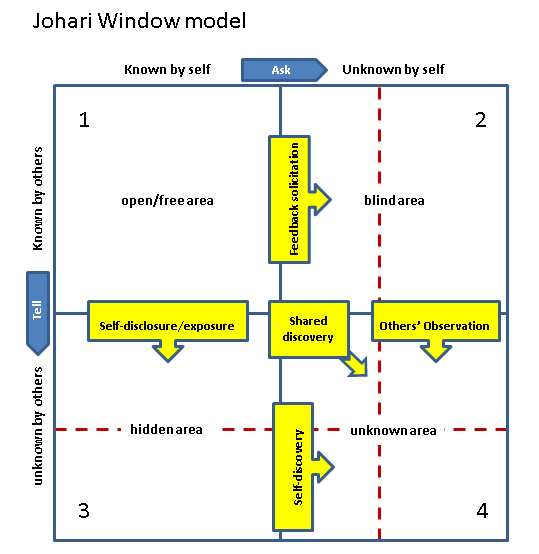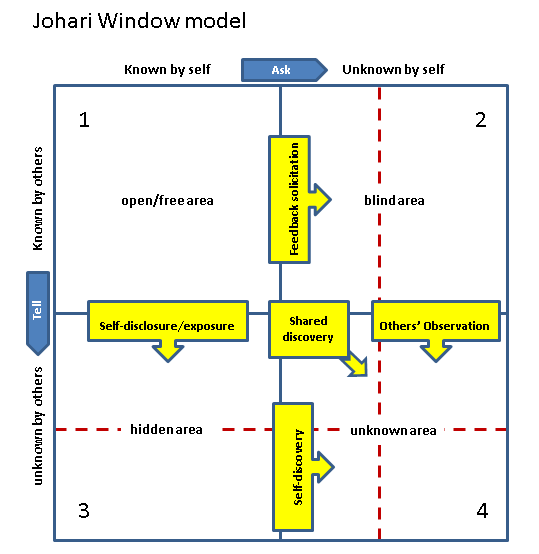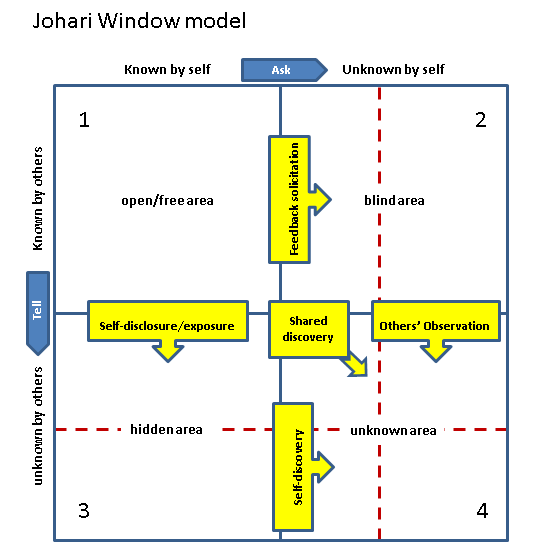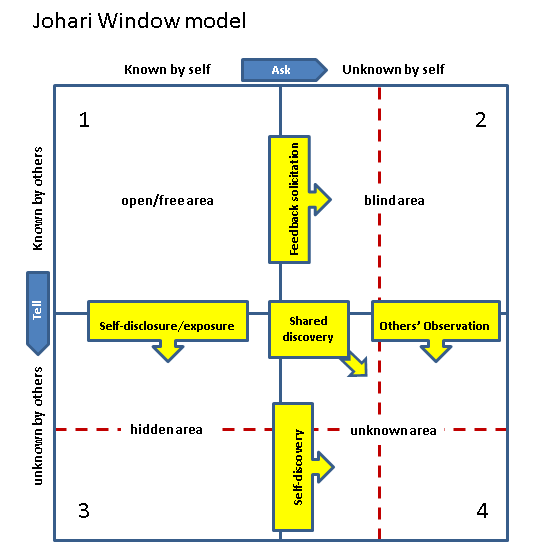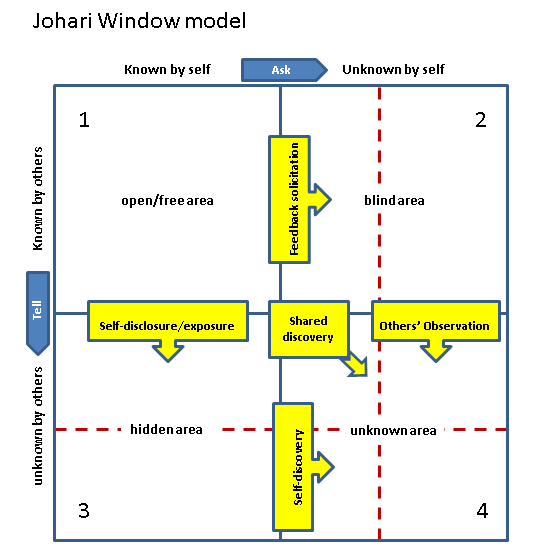I cannot leave the Johari Window without mentioning an aspect of it that I find fascinating!
Usually, in our culture, children are born and many families begin as a result of two people falling in love so (as a website that has the protection of children at heart) it might be interesting for us to explore it a little here.
When I fall in love the extent of my self-disclosure suddenly becomes very high, and Pane 1 expands. I have no secrets, and I tell the person with whom I am in love things that I never told anyone else.
Pane 3 reduces as my private space becomes smaller. Very often falling in love happens at the same time as, or shortly after, the adolescent resistance to self-disclosure to parents so I have the feeling that at last I have someone who understands me.
This is a very powerful feeling at that time of life. (Of course falling in love is not confined to late adolescence or early adulthood but it is the most interesting time to consider in our case as we have not reached anywhere near full maturity at that time of our lives).
When I fall [1] in love I actually lose my sense of self as I am swept away on a seemingly unstoppable wave of enthusiasm for the other. I seem to be able to take any type of feedback whatsoever, and I often change my values, habits, and even fundamental ways of being to accommodate the needs of the person with whom I am in love.
Pane 2 also reduces as I take on board feedback, learn things that I did not know about myself but the other can spot, and undergo a period of change to accommodate the other person’s needs.
However this is an unreal type of experience.
During it I cannot see anything wrong with the other person and my assessment of my situation is done from a place of total immersion in the experience. (It is interesting that in common usage, an infatuation with anything or anyone is sometimes called the honeymoon period).
Now the reason that this feeling of being swept away does not last too long is that all humans have a need to be grounded in reality. And since we are all imperfect, eventually the imperfections of the other become apparent to me, and my imperfections become apparent to the other.
If we are healthy, emotionally, we will both have enough self-confidence to 1): continue self-disclosure to get to know each other more fully, at a more mature and complex level, and 2): give and accept honest feedback so that we can learn more about each other’s blind spots. This sets up a reasonably healthy process of growth and maturity.
Of course, over time, the urge to retain our sense of self, and indeed the norms of our family of origin, some of which may have been unhealthy, may cause us to default to the familiar, actually decrease self-disclosure, and become resistant to feedback.
In normal, relatively healthy, long-term relationships the amount of self-disclosure and ability to give and/or receive feedback levels out to a point that both parties are content with. Children growing up in such a family get to know the rules from an early age and grow up and develop in a reasonably healthy environment. While it might not be ideal or perfect it is good enough, and is probably the way that the vast majority of families live their lives.
However the reality, for some couples who fall in love, is a lot different.
Sadly (and relevant to our work in family support) resistance to honest feedback coupled with increasing unwillingness to self-disclose often creeps in unknowingly and becomes worse over time.
Instead of the healthy good enough level referred to above, an unhealthy, even toxic relationship develops, which is intolerable for all, in particular children. Parents can sometimes get so angry with each other that they cease to communicate and the public area (Pane 1) gets smaller and smaller to the extent that they might start forgetting good things that they once knew about each other.
This is then modelled to children with the result that they, too, learn to close their ears to advice which they may need growing up and treat even constructive criticism from a significant figure in authority (e.g. parent, teacher, Garda, etc.) as a personal attack on them.
While intellectually (in their head) they know that the giver of the information may be correct, emotionally, (in their body) they have not matured sufficiently to take it on board.
And it is interesting that it appears that those who, many people feel, would benefit most from feedback are often those who resist it the most.
[1]. Fall is a very appropriate word here – and we seem to be totally unaware of what will happen when we land!

